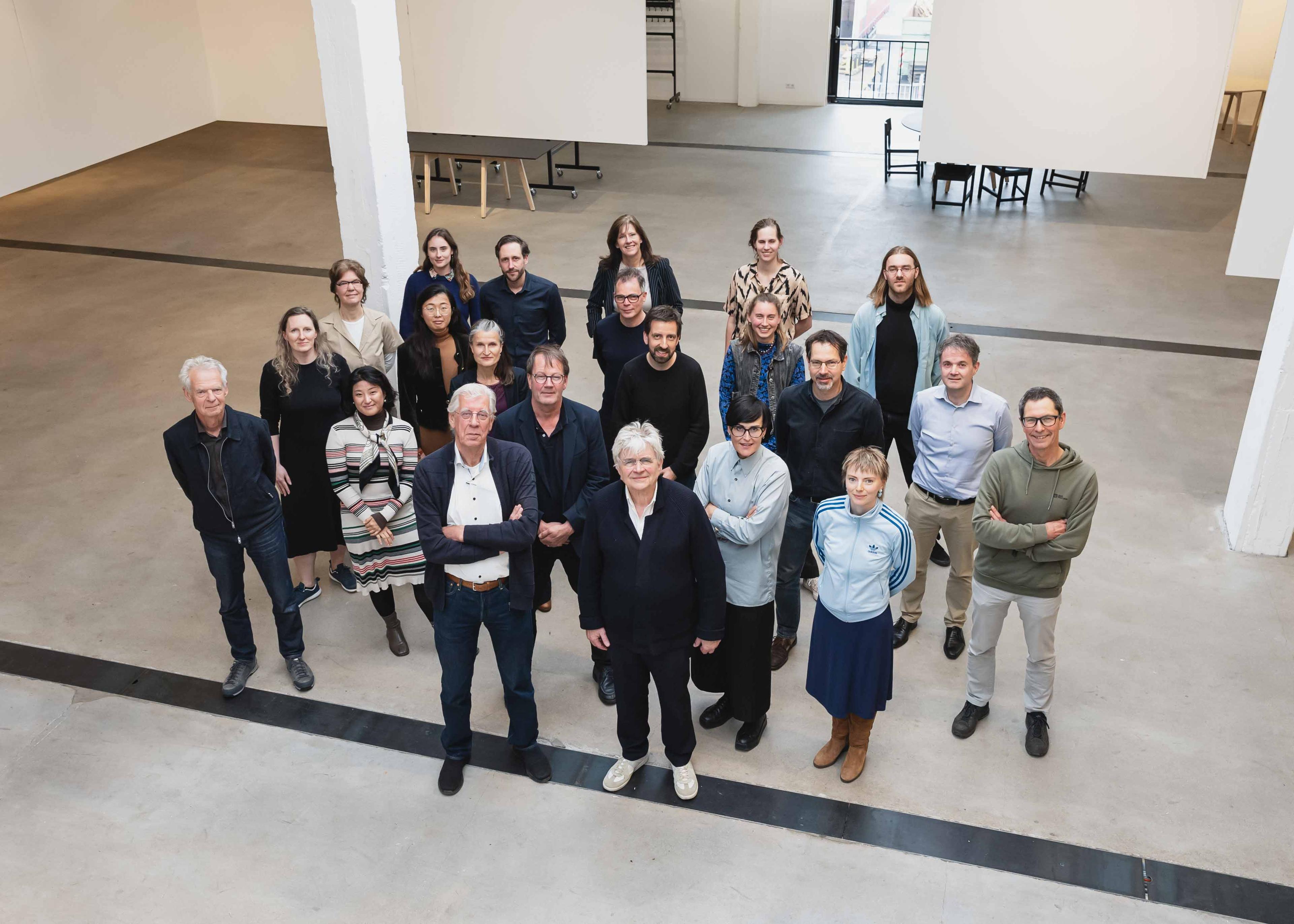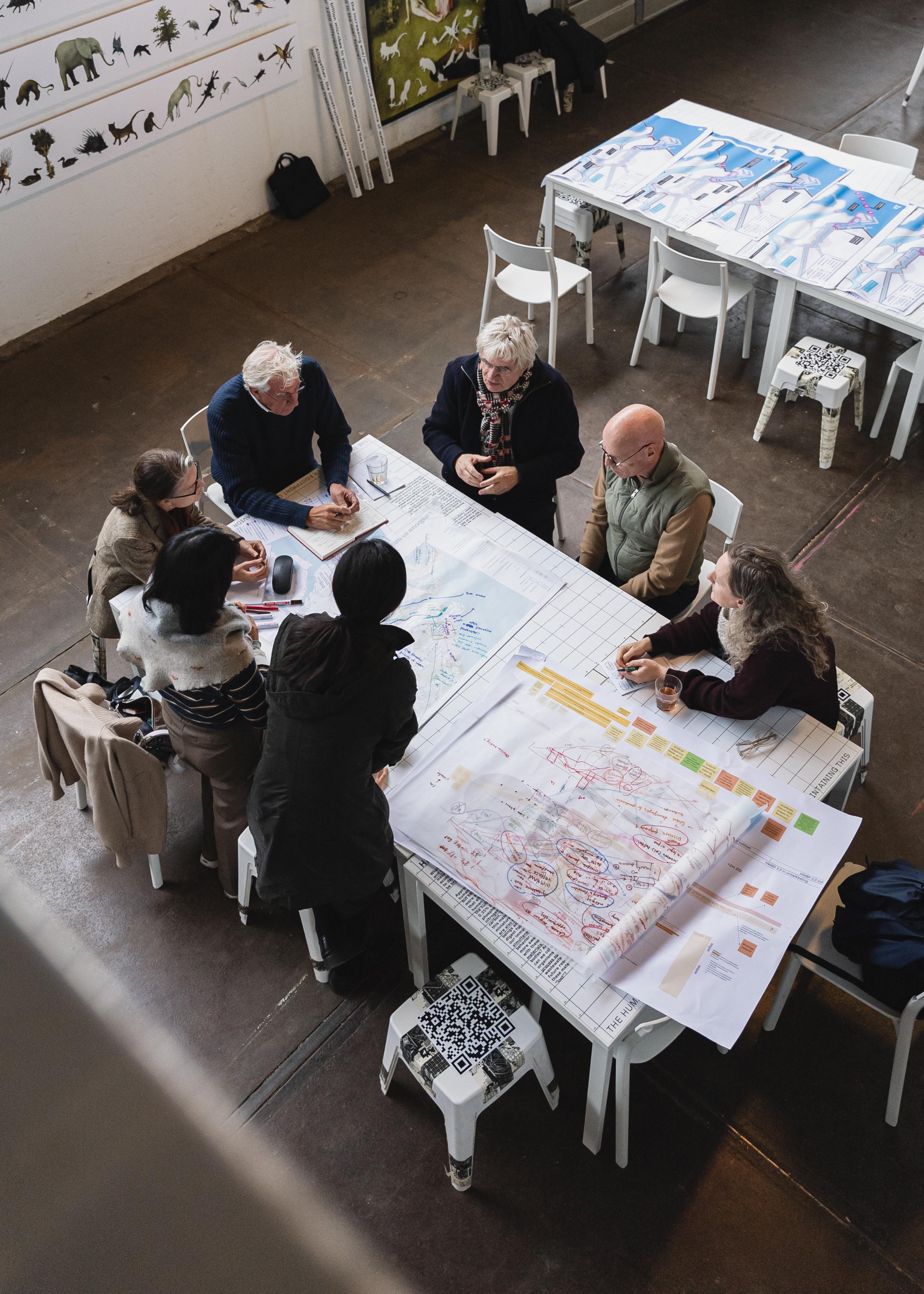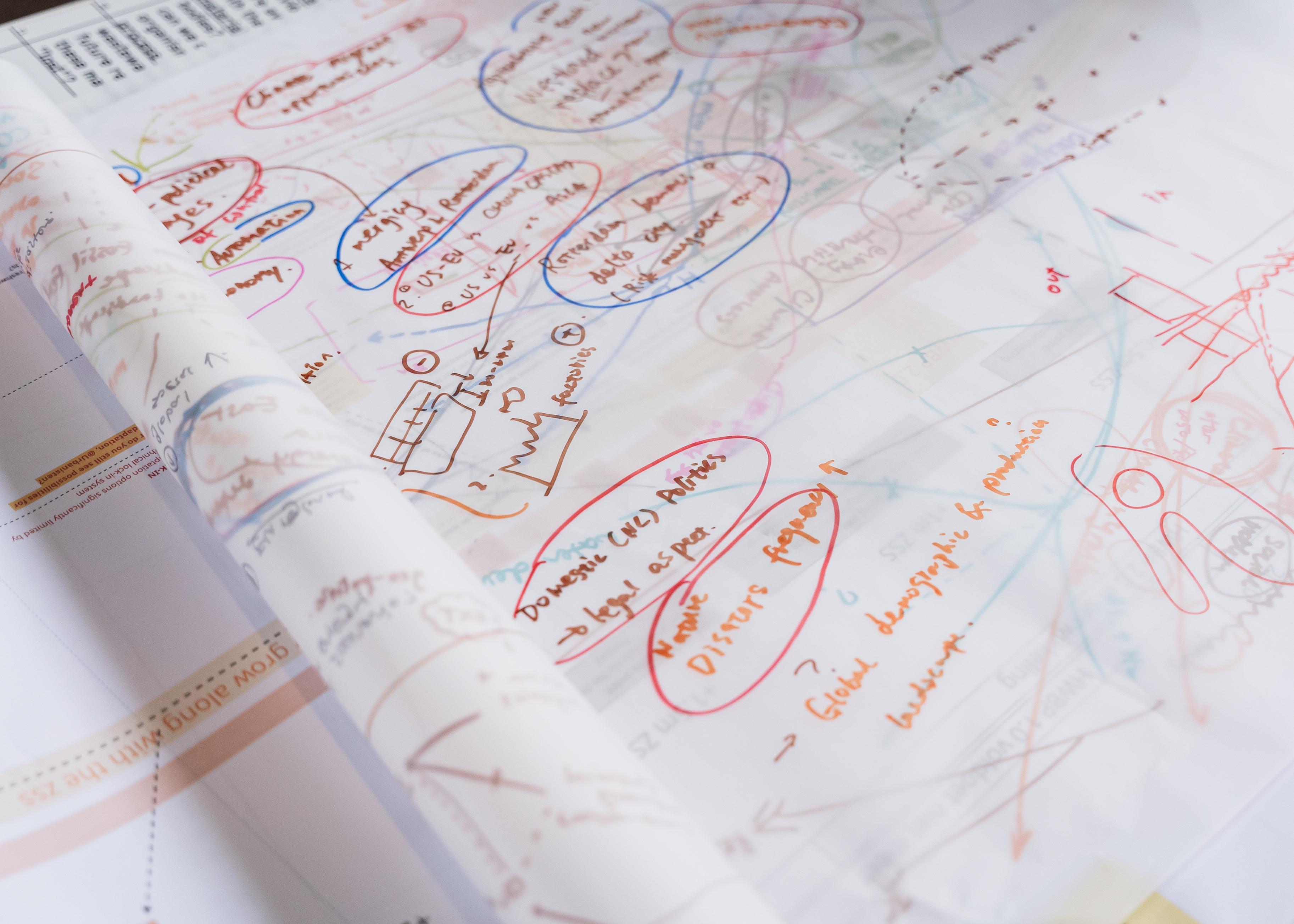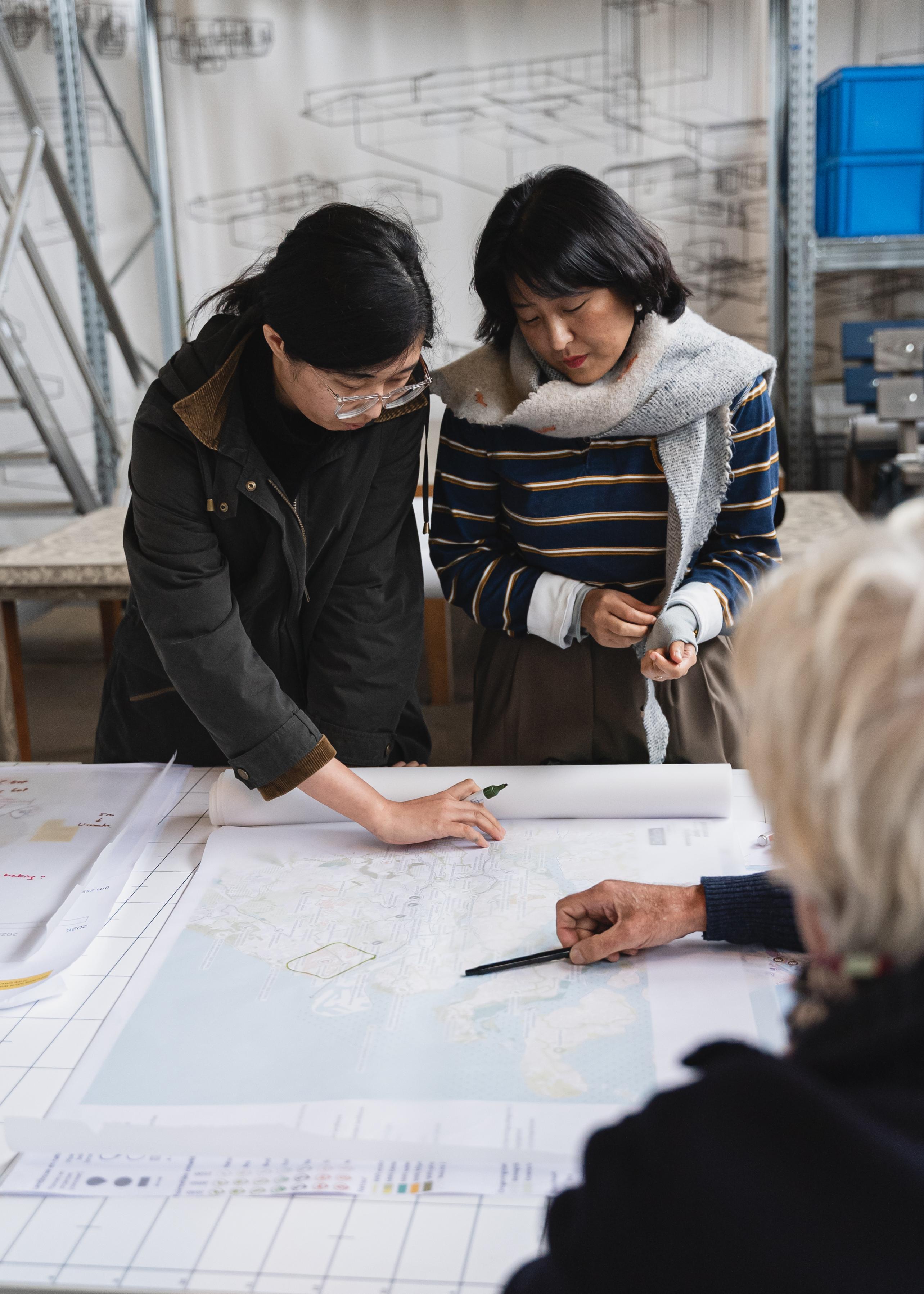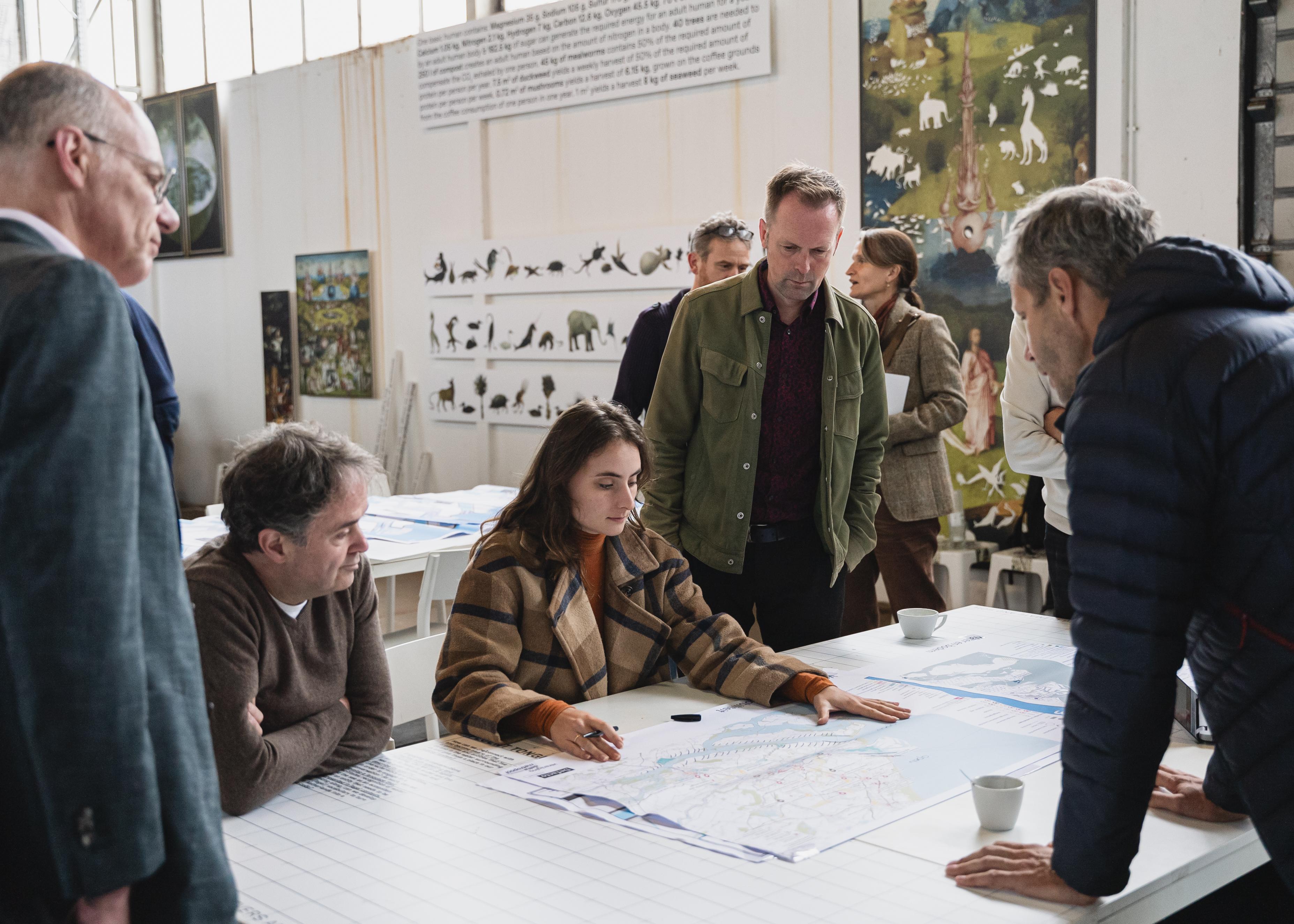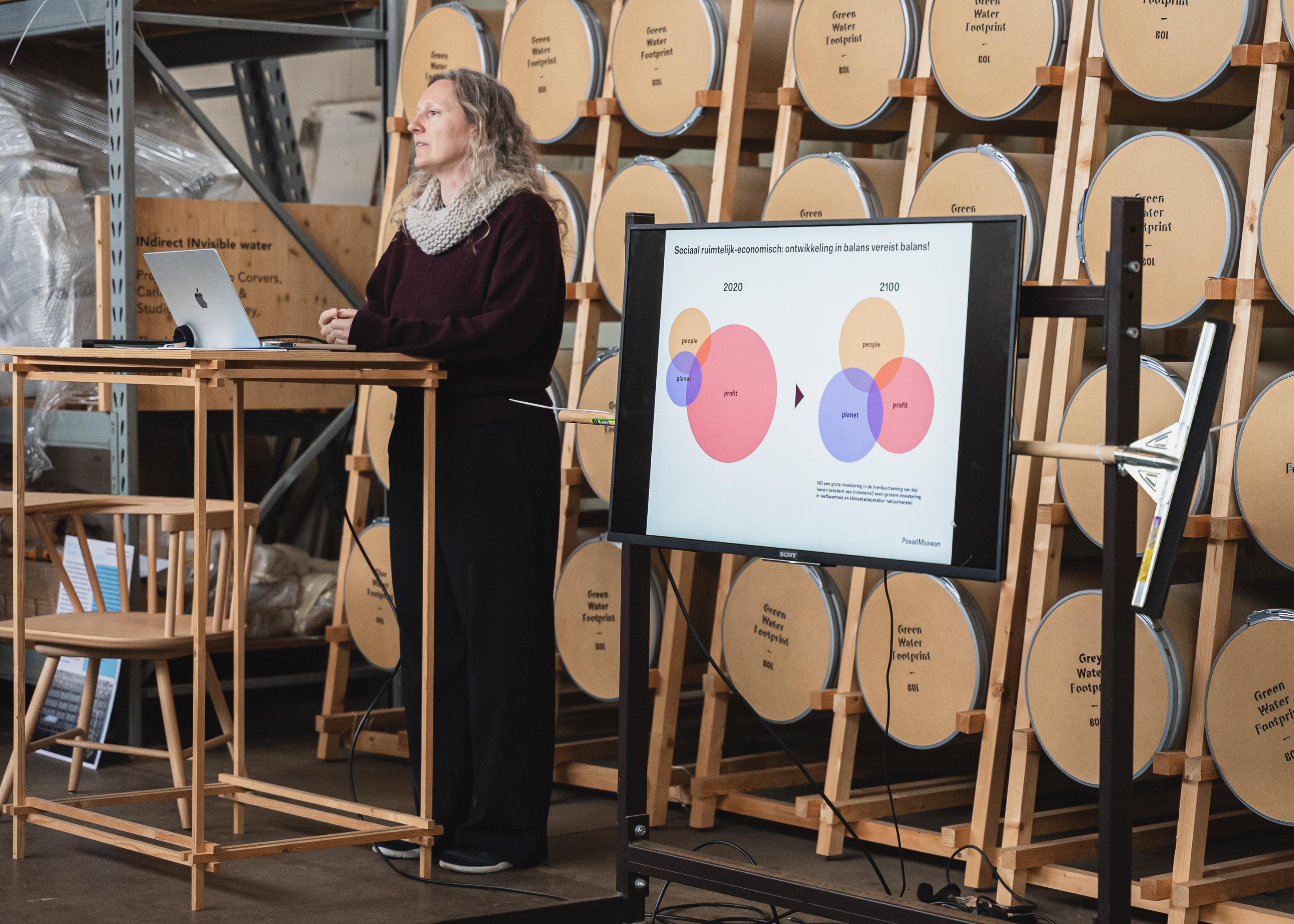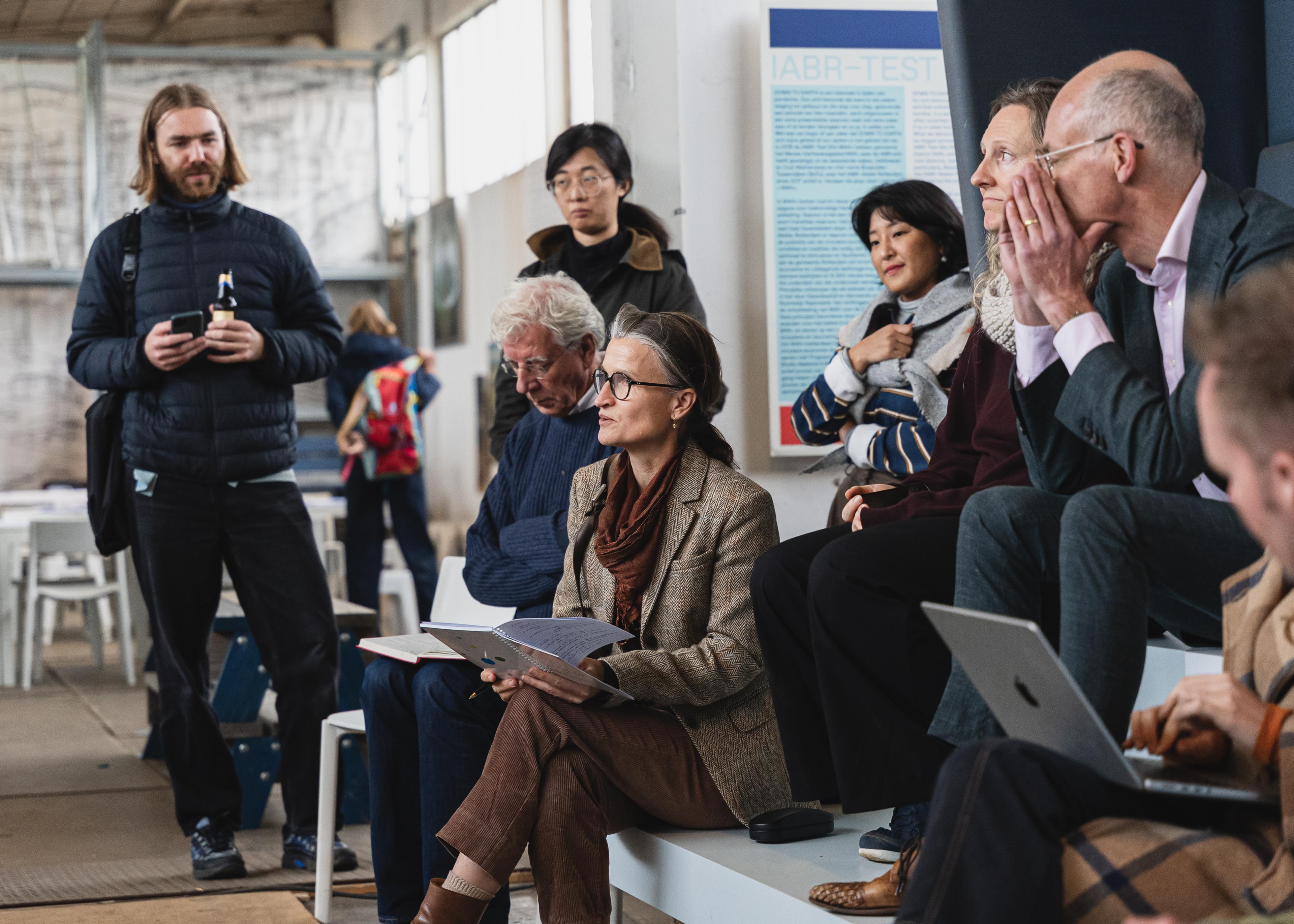What is the research method of IABR Atelier Delta Rijnmond-Drechtsteden 2100?
At the heart of the IABR’s approach lies design-driven research. This means that spatial scenarios are developed as a tool to gain insight into future decision-making possibilities. Three design firms — De Urbanisten, H+N+S Landscape Architects, and PosadMaxwan — each work on their own scenario, based on six water safety strategies defined by the Delta Programme. These range from extending the current strategy to completely closing off or opening up the sea inlet.
Through a series of work sessions, the design teams explore how these strategies can be spatially translated and what the implications are for the economy, ecology, and society. Each scenario maps out opportunities, risks, and required investments. The method includes backcasting: reasoning back from a future vision to identify what actions are needed today. This is done in close collaboration with policymakers, experts, and local authorities. The result is not just a vision, but also a testable framework to support future decision-making.
What do we aim to achieve with Delta Rijnmond-Drechtsteden 2100?
This research aims to prepare the Rijnmond-Drechtsteden region for a future in which climate change and sea level rise have a major impact on the living environment. The goal is to deliver three to four spatially developed scenarios that can serve as building blocks for future policy decisions. These scenarios not only address the technical aspects of water safety but also shed light on the social, ecological, and economic consequences.
By creating spatial maps, future visions, and concrete development strategies, we support decision-makers and policymakers in making choices that reflect the complexity of the region. Additionally, we aim to contribute to a broader public discussion on how the Netherlands can respond to a changing climate and shape the future of its delta.
“We can imagine shaping the range of socio-spatial futures in our region through the lens of the (port) economy and the broader economy. The (port) economy is also an expression of wider socio-spatial developments in society.”
Dirk Sijmons, Atelier Master Delta Rijnmond-Drechtsteden 2100
When can you expect results from Delta Rijnmond-Drechtsteden 2100?
The design research runs from April through November 2025. During this period, six work sessions will take place in which design teams, experts, and policymakers collaboratively develop the scenarios. The results will be presented at the end of 2025, with a public final presentation tentatively planned for October or November.
The outcomes will include maps, spatial visions, development strategies, and concrete policy recommendations. These will serve as input for the recalibration of the Delta Programme (track 3) and contribute to broader policy processes such as NOVEX and the Environmental Agenda. A clear and accessible visual format is also being developed, allowing the scenarios to be easily compared and understood by a wide audience.
This makes the research not only a contribution to policymaking, but also an invitation to a broader conversation: about how we shape our country, where we dare to build, and where we might be better off letting go. The results may also be featured at the International Architecture Biennale in 2026.
On 4 June, the core team of the IABR Atelier Delta Rijnmond–Drechtsteden 2100 gathered at Oase in the Schiehaven. Design teams presented their visions for the spatial challenges leading up to 2100, followed by in-depth thematic discussions on water strategies, the port water system, and existing knowledge gaps. The afternoon created space for sharp questions, critical reflection, and new insights. Artist Maud van den Beuken introduced a sensory perspective on the river and landscape, inviting participants to join her performative We Carry the River march. The work session marked a meaningful step forward in content and direction, setting the stage for the next meeting on 17 September 2025.

